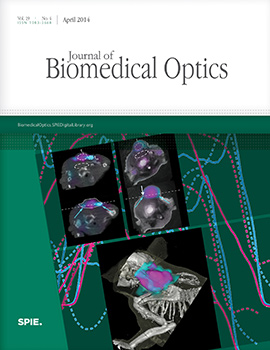Fast vascular component of cortical spreading depression revealed in rats by blood pulsation imaging
-
Journals
- Advanced Photonics
- Advanced Photonics Nexus
- Biophotonics Discovery
- Journal of Applied Remote Sensing
- Journal of Astronomical Telescopes, Instruments, and Systems
- Journal of Biomedical Optics
- Journal of Electronic Imaging
- Journal of Medical Imaging
- Journal of Micro/Nanopatterning, Materials, and Metrology
- Journal of Nanophotonics
- Journal of Optical Microsystems
- Journal of Photonics for Energy
- Neurophotonics
- Optical Engineering
- Photonics Insights
- Ebooks



 Receive Email Alerts
Receive Email Alerts